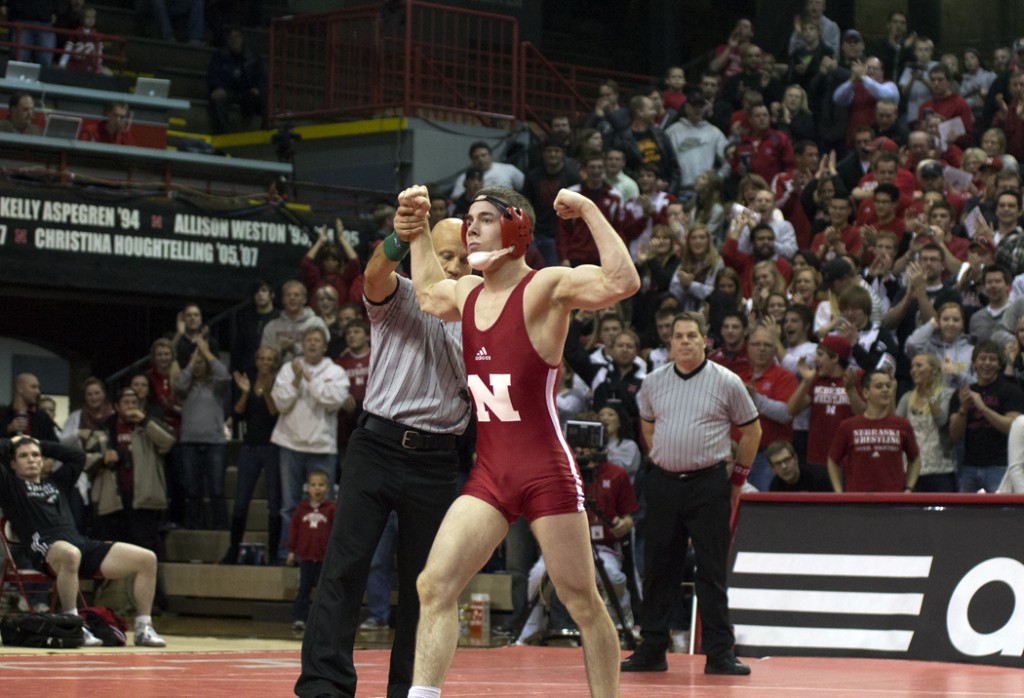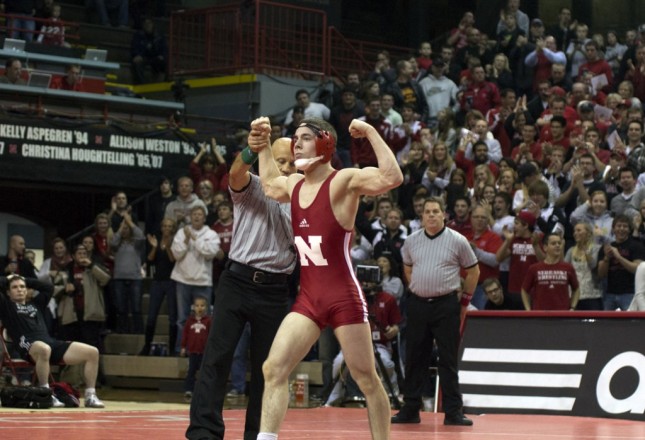
Strength Training for High School Wrestlers:
Turn a good athlete into a great athlete.
By Ridge Kiley, CSCS
Dolce Diet Certified Coach
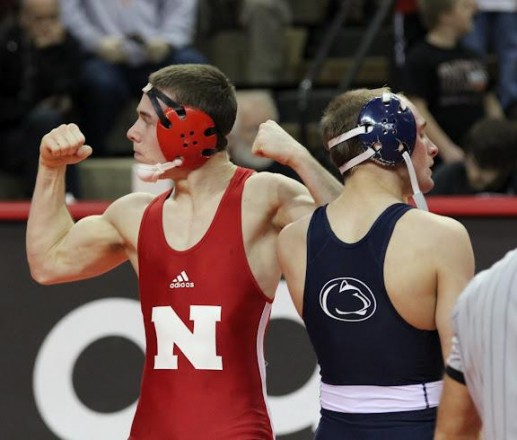 As a freshman and sophomore in high school, I weighed less than 100 lbs. soaking wet. Being a small freshman in a room full of guys twice my size made it tough for me to be “competitive.” Although I wasn’t the strongest in the weight room, my effort and consistency were unmatched. I was never able to lift massive amounts of weight in high school, but I was extremely flexible and could do over 40 pull-ups and 100 push-ups. During the time between my freshman and sophomore years of high school I did 500 push-ups every day over the summer.
As a freshman and sophomore in high school, I weighed less than 100 lbs. soaking wet. Being a small freshman in a room full of guys twice my size made it tough for me to be “competitive.” Although I wasn’t the strongest in the weight room, my effort and consistency were unmatched. I was never able to lift massive amounts of weight in high school, but I was extremely flexible and could do over 40 pull-ups and 100 push-ups. During the time between my freshman and sophomore years of high school I did 500 push-ups every day over the summer.
The phrase “how much do you bench?” is a common question that boosts or diminishes confidence for the high school athlete. The fact of the matter is that being able to do 30 strict body weight pull-ups is more impressive and more conducive to wrestling than being able to bench press double plates in high school.
I was the kid that never missed a weight lifting session or workout and mastered body weight exercises such as the push-up, pull-up and sit-up. It is crucial to build a solid foundation of basics for weight lifting before moving on to more complex exercises. Just like the sport of wrestling, you must be able to stay in your stance before you can tie up. Before adding a ton of weight, one must master the basic movements of each exercise.
I competed at 103 lbs. my first three years of high school and finished at 112 lbs. my senior year. I placed 2nd, 3rd and 1st at the Iowa High School State Wrestling Tournament and became a 2x Junior National All-American, taking 3rd in Greco-Roman and 4th in Freestyle. My overall high school record was 158-25 and I graduated as the No. 2 ranked senior in the nation at my weight class.
I went on to wrestle for the University of Nebraska-Lincoln. I became a 3x NCAA Division I National Qualifier and medaled at several prestigious tournaments such as the Big 10 Championships, Big 12 Championships, Midlands Championships and Cliff Keen Invitational. I began my first season as a small 125 lbs. wrestler and finished my college career as a very large 141 lbs. wrestler.
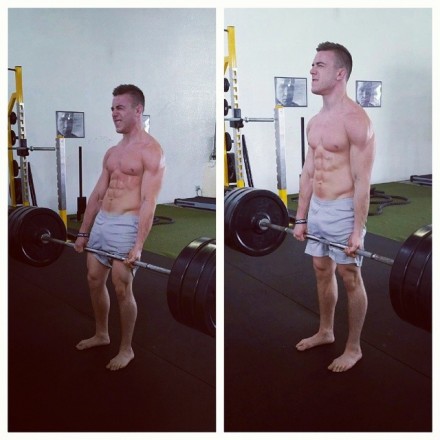 I competed at 133 lbs. in the NCAA National Championships my junior year. I hit the weight room harder than ever that summer and was 170 lbs. by the start of my senior season, at just 6.5 percent body fat. I was determined to win the team’s “Lifter of the Year” award (I did) and end my senior season on top of the podium. Ideally, I should have been competing at 157 lbs. or even 149 lbs., but the team was strongest with me back down at 141 lbs.
I competed at 133 lbs. in the NCAA National Championships my junior year. I hit the weight room harder than ever that summer and was 170 lbs. by the start of my senior season, at just 6.5 percent body fat. I was determined to win the team’s “Lifter of the Year” award (I did) and end my senior season on top of the podium. Ideally, I should have been competing at 157 lbs. or even 149 lbs., but the team was strongest with me back down at 141 lbs.
This is when the Dolce Diet came into my life. Making this weight class all season would not have been possible without Mike’s help.
After graduation, I obtained my CSCS and opened Unrivaled Sports Performance – a wrestling, MMA and strength & conditioning gym. I was able to work with high school, collegiate, amateur and professional athletes for strength training. I am now training wrestling full-time in pursuit of World and Olympic medals as part of the Cyclone Wrestling Club Regional Olympic Training Center at Iowa State University.
The most consistent problem with my athletes was not work ethic or the desire to train, but proper form, particularly in the squat! Swallow your ego, take the 6 plates off, and squat deep every single rep. By doing a full squat, or as I like to say “ass to grass” with less weight, you will improve your strength at a more efficient rate. I can assure you that putting multiple plates on each side of the bar while doing quarter or half squats won’t make you the strongest athlete you can be.
Weight training helps decrease the risk of injury, increase lean muscle mass, decrease body fat, improve mood, increase bone density, improve speed, improve strength and much more. One major problem with high school weight training is the lack of knowledge and expertise by coaches and athletes.
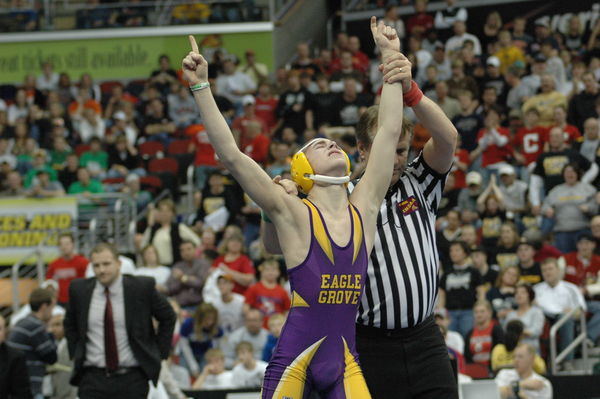
It is important for coaches and athletes to recognize the need for periodization – a strategy for training that involves changing training methods throughout the year to maximize performance. I prefer 3-4 week microcycles within my overall plan for the year. This keeps my training fresh and goal oriented. Weight training for the pre-season, in-season, post-season and off-season call for different training regimens. My off-season training plan generally consists of more weight training days per week.
It is important to note that rest is equally important to work. Athletes can benefit from taking a week off from the weight room or dedicating a week to lift lighter weights (deloading or unloading).
In-season weight lifting is important, but it must be done correctly. Each lifting session must be started with a proper warm-up followed by dynamic stretches. The body should be fully warmed up before starting an intense lifting session. Neglecting a proper warm-up could lead to injury during lifting sessions.
I prefer to do my heaviest lifting sessions at the beginning of the week and taper down as I get closer to competition. A training session is not a race. Be sure to allow proper rest time between sets and exercises, depending on the desired goal. In-season lifting is dedicated to maintaining strength and injury prevention. Lifting bouts should last about 45 minutes. Get in, work your butt off, and get out.
Here is a basic in-season weight lifting program that would be a great start for a high school wrestling team:
Monday (Heavy) – Push Day:
Squat 4×5, 2-3min rest.
Dumbbell Incline Bench 4×5, 2-3min rest.
Lunges 3×5(each leg), 90 seconds-3 min rest.
Seated Military Press 3×5 2-3 min rest.
Weighted Push-Ups 3×10 2-3min rest.
Abs – 3 sets of choice exercise
Wednesday (Light to Moderate) – Pull Day:
Hang Clean 4×5, 2-5 min rest.
Barbell Bent Over Row 4×5, 2-3 min rest.
Single Leg RDL 4×6 (each leg), 90 seconds-3 min rest.
Inverted Row 3×15 1-3 min rest.
Pull-Ups 3×10 1-3 min rest.
Abs – 3 sets of choice exercise
*Lifting sessions per week will be varied based on competition schedule
A basic off-season weight lifting program looks like this:
Monday (Heavy)– Lower Body Push, Upper Body Pull:
Hang Clean 4×5, 3-5 min rest.
Front Squat 4×10, 1-3 min rest.
One Arm Row 3×12 (each arm), 1-3 min rest.
Walking Lunges 4×8 1-3 min rest.
Split Leg Squats 4×10 (each leg), 1-3 min rest.
Weighted Pull Ups 4×5-10, 1-3 min rest.
Abs – 3 or 4 sets of weighted exercise of 10-15 reps (i.e. weighted sit ups)
Wednesday (Moderate to Heavy)– Upper Body Push:
Barbell Incline Bench Press 4×10, 1-3 min rest.
Medicine Ball Throws – 4×8, 1-3 min rest.
Tricep Pushdowns 3×10, 1-2 min rest.
Superset Dips 3×15 and Weighted Push-Ups 3×10, 1-3 min rest.
Abs – 3 sets of choice exercise
Friday (Light – Moderate) – Mixture of Push and Pull Exercises:
Deadlift 4×8, 1-3 min rest.
Push Jerk 3×10, 1-3 min rest.
Stability Ball Curls 3×15, 1-3 min rest.
Farmer Walks 3×15-30 seconds, 1-3 min rest.
Alternating Front and Lateral Raises 3×12 (each), 1-3 min rest.
Hammer Curls 3×12, 1-3 min rest
Abs – 3 sets of high rep exercises
Weight training is an important activity that cannot be neglected for those looking to become a better athlete. Remember to build a solid foundation of the basics for weight lifting before moving on to the more complex exercises. Coaches administering weight lifting sessions need to motivate and encourage the athletes. Coaches must also ensure proper technique is being used by their athletes to avoid injury. A weight training session for an athlete is not a social hour. Get in, work your butt off, get out. Wrestlers are among the greatest athletes on the planet. Let’s continue to hold a high standard by working hard and smart in the weight room!
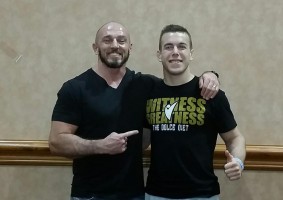 RIDGE KILEY is the newest member of THE DOLCE DIET team. He holds a Bachelors of Science Degree in Business and is a Certified Strength & Conditioning Specialist through the National Strength Coaches Association. Ridge won the Iowa State High School Wrestling Championship before receiving an NCAA Division I Wrestling Scholarship to the University of Nebraska where he was a three-time NCAA Division 1 Wrestling National Tournament qualifier. Ridge is currently training at Iowa State University with the Cyclone Wrestling Club in pursuit of World and Olympic titles.
RIDGE KILEY is the newest member of THE DOLCE DIET team. He holds a Bachelors of Science Degree in Business and is a Certified Strength & Conditioning Specialist through the National Strength Coaches Association. Ridge won the Iowa State High School Wrestling Championship before receiving an NCAA Division I Wrestling Scholarship to the University of Nebraska where he was a three-time NCAA Division 1 Wrestling National Tournament qualifier. Ridge is currently training at Iowa State University with the Cyclone Wrestling Club in pursuit of World and Olympic titles.
You can ask Ridge questions for future articles via Ridge@TheDolceDiet.com and follow him on Twitter @Kiley_Wrestling
